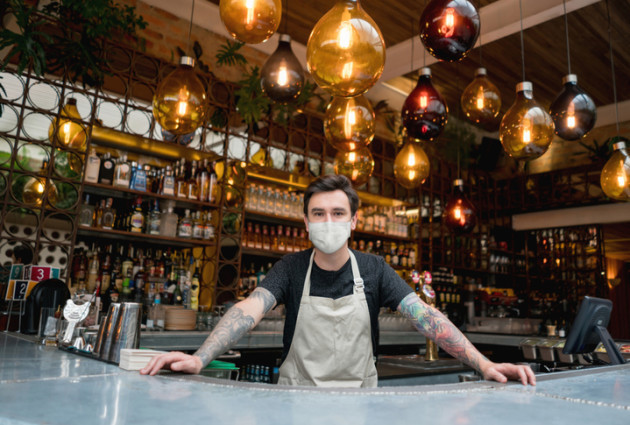
Number of licensed premises trading down 25,000
The number of licensed premises trading across Britain is down by nearly 25,000 on March levels as openings stall, according to the latest Market Recovery Monitor from CGA and AlixPartners.
Just over 90,000 premises were trading by the end of September—a net increase of nearly 4,000 sites in a month, but the figure is sharply down on the 15,500 sites that opened during August when the Eat Out to Help Out scheme incentivised many operators to return.
Openings slowed in September after business and consumer confidence was dented by new trading restrictions, with the current trading total comparing to around 115,000 licensed premises recorded by CGA in March.
“Britain now has around 25,000 fewer licensed premises than it did before the pandemic, and the big question is how much of that shortfall will ever be recovered,” said Karl Chessell, business unit director for food and retail at CGA.
“While there are encouraging signs in some parts of the market, it is clear that capacity is closely following the pattern of suppressed consumer demand. August was a strong month of recovery for hospitality in both site numbers and trading, but these figures show that momentum has stalled. Very damaging new restrictions in Scotland and areas of England will undoubtedly weaken the market further, and sustained government support is urgently needed if the industry is to protect sites and jobs over the autumn,” he said.
The Monitor also showed that pubs have been much quicker to reopen than restaurants, and more than nine in 10 are now back trading. But with ongoing measures including distancing and curfew requirements making conditions much tougher for late-night operators, fewer than three quarters (73.2%) of all known bars and barely half (56.2%) of nightclubs are trading.
In the restaurant sector, nearly nine in ten (87.3%) casual dining venues are now open. But with many leading brands announcing CVAs or closure programmes, there are now 1,200 fewer sites than there were in March.
The report also emphasised significant challenges to independent operators and the London market, with fewer than three quarters (73.3%) of independent businesses having returned compared to nine in 10 (91.7%) managed sites.
There are now 21,000 fewer independents trading than before the pandemic hit in March. In London, three quarters (75.6%) of all sites are open, well down on other major cities including Manchester (83.6%), Liverpool (85.6%) and Edinburgh (82.3%).
AlixPartners MD Graeme Smith said: “Companies and their investors are deeply concerned about the spectre of new restrictions, such as those introduced in parts of Scotland and those expected to follow in the north of England. Cash remains king and operators will continue to seek ways to preserve as much as they can, but there is a significant risk that without increased government support in affected areas, businesses will not be able to survive further lockdowns. The sector is steeling itself for tough times ahead as we head into the autumn and winter months.
“Those that have taken on additional debt to survive this crisis will have a focus on how quickly profits can recover in order to pay this back and recover shareholder value. Of course, there is pain to come but the net result could be a set of leaner and more agile companies.”
The Market Recovery Monitor has been launched by CGA and AlixPartners to track the openings and closures of Britain’s licensed premises over the second half of 2020 and beyond. It is based on CGA’s exclusive Outlet Index, a constantly updated database of the country’s premises.
Keywords:
- On-Trade
- CGA
- Restaurants
- Bars
- pubs
- hospitality
- closures
- Coronavirus
- Covid-19
- covid
- AkuxPartners
- UK on-trade




